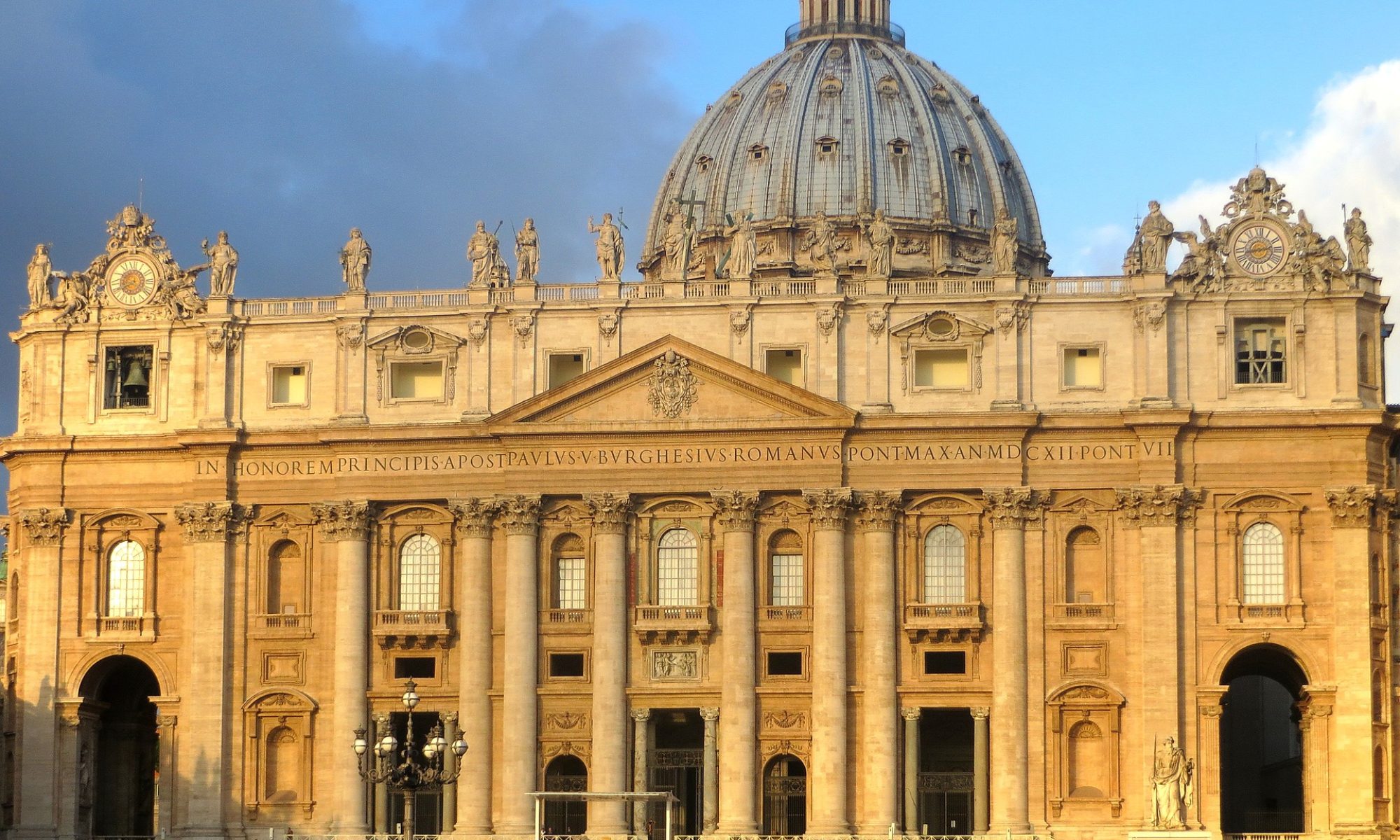June 1st, 2015
Pope Francis surprised the Catholic community and the public in unexpectedly announcing the indiction of an extraordinary Jubilee year beginning at the end of 2015 and running throughout most of 2016. The tradition of celebrating jubilee years dates back 1300 AD when pope Boniface VIII issued the first holy year calling pilgrims to visit Rome in order to receive a plenary indulgence. The name “jubilee” reminds of the biblical institution of the jubilee whereby, according to the Mosaic law, every fifty years slaves were supposed to be freed and debts had to be cancelled (e.g. Leviticus 25). However, in spite of the name, the Roman ecclesiastical jubilee has little to do with this biblical precedent and mostly to do with the medieval practice of a powerful church granting remission of the penalty of sin by shortening the time in Purgatory. The Vatican jubilee is therefore part and parcel of a theological vision whereby Purgatory is a pillar of the afterlife, the church claims to administer God’s grace on His behalf, and pilgrims have to do some penitential acts like rosaries, pilgrimages, fasting, i.e. religious works, in order to receive the remission. It is not a coincidence that Martin Luther, after visiting Rome in 1511, became troubled with the practice of indulgences and eventually nailed the 95 theses in the (vain) hope that a biblical and public discussion could be initiated.
It is interesting to note that an unconventional Pope like Francis, who is known for his down-to-earth language and easy-going manners, would instead indict a Jubilee year which is part of a long and well-established tradition deeply rooted in the Middle Ages. Even the apparently “fresh” approach by Francis is always to be related to the “old” institution he is head of.
Focus on Mercy
Francis wants his Jubilee year to be focused on mercy. The overall theme of the year and of its wide-ranging activities will be mercy. This is not a new emphasis. His 2013 apostolic exhortation Evangelii Gaudium already centered on mercy as an encompassing rubric of the mission of the church. After being elected, Francis went public in saying that he was reading a book by Cardinal Walter Kasper, Mercy. The Essence of the Gospel and the Key to Christian Life (Mahwah, NJ: Paulist Press, 2014) and that he was profoundly impressed by it. So, the Jubilee of mercy will be a vantage point from which Francis’s understanding of mercy will be displayed in full force.
So far, some indications about how he understands mercy are a mixed bag. In these first two years of his reign, mercy has often been swollen with regard to its biblical meaning as to refer to a sort of divine and universal benevolence towards all. Eye-catching sentences like “Who am I to judge?”, “God forgives who follows his conscience”, “God always forgives”, contribute to widen God’s mercy to the point of being exchanged for an all-embracing, all-inclusive love. Yet unclear is the way in which the Pope relates God’s mercy to His justice and how this relationship fits in the work of Jesus Christ on the cross. According to Scripture, Christ is the “merciful and faithful high priest” who made “propitiation for the sins of the people” (Hebrews 2:17). Any biblical understanding of mercy needs to be interwoven with God’s justice and Christ’s atonement which calls for repentance and faith. Otherwise, mercy can be (ab)used as a general manifestation of kindness which does not depict God’s mercy at all, but is rather a form of humanistic goodwill.
What about Indulgences?
The Bull of indiction of Jubilee of Mercy was issued on April 11th and is entitled Misericordiae Vultus (The Face of Mercy). There was some curiosity about how this outward-looking Pope come “from the ends of the world” would treat a very “Roman” and ecclesiastical topic like indulgences. He deals with it at paragraphs 21-22 where he uses a language much more personal and relational than juridical and traditional, yet the substance of the theology and practice of the indulgences is granted.
In closing, one almost overlapping event will be the V centenary of the Protestant Reformation in 2017. It is interesting to observe that while on the one hand the Roman Catholic Church is officially preparing an “ecumenical” commemoration of the Reformation, on the other she represents and promotes again the theology and the practice that caused the Reformation, i.e. the granting of indulgences. How is it possible to commemorate something that was opposed to the indulgences and, at the same time, focus on the same theological framework that was the cause of the dispute? Is it because the Roman Church is, despite all change, semper eadem, always the same?
